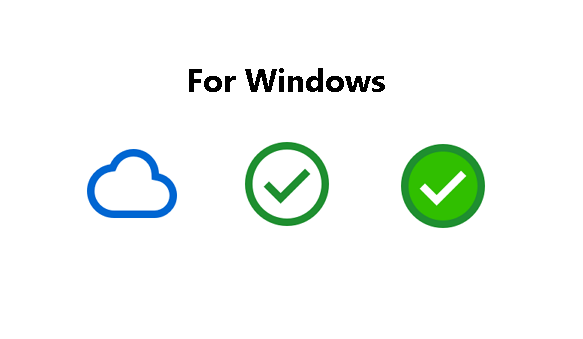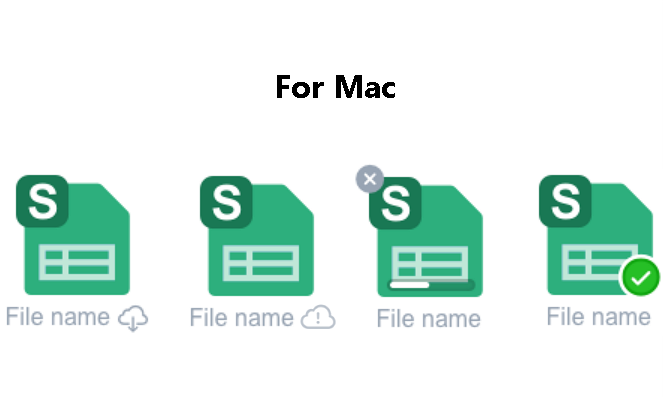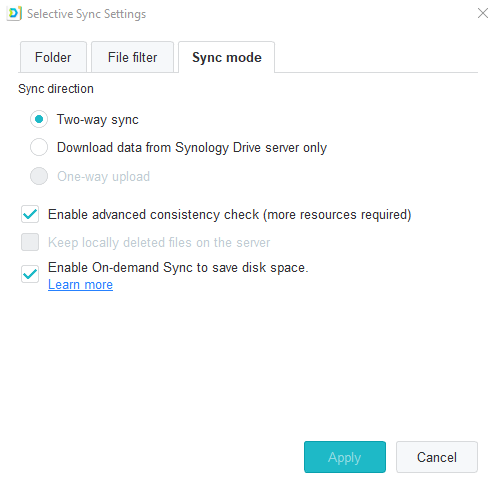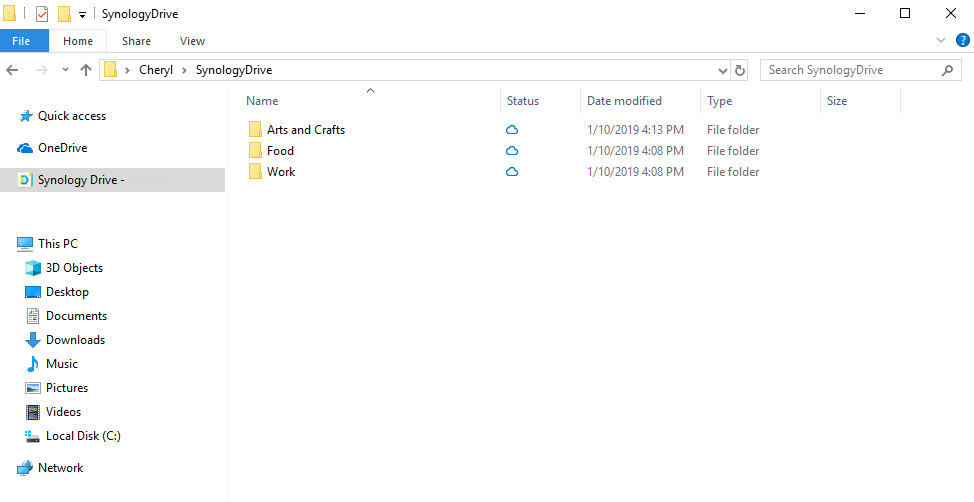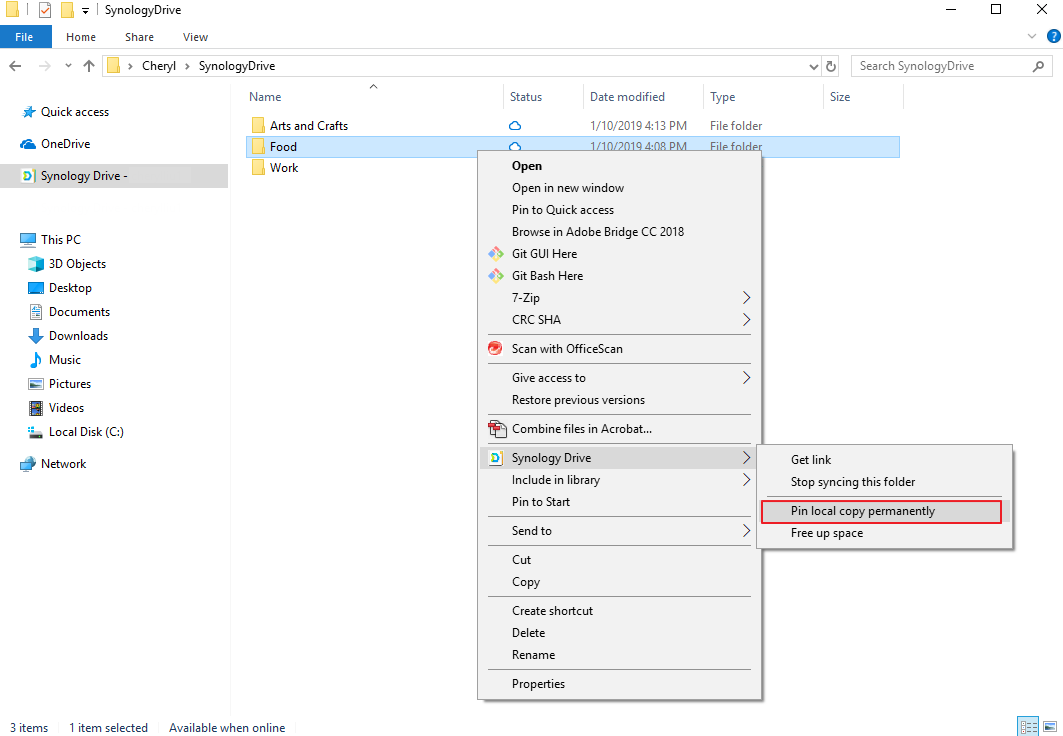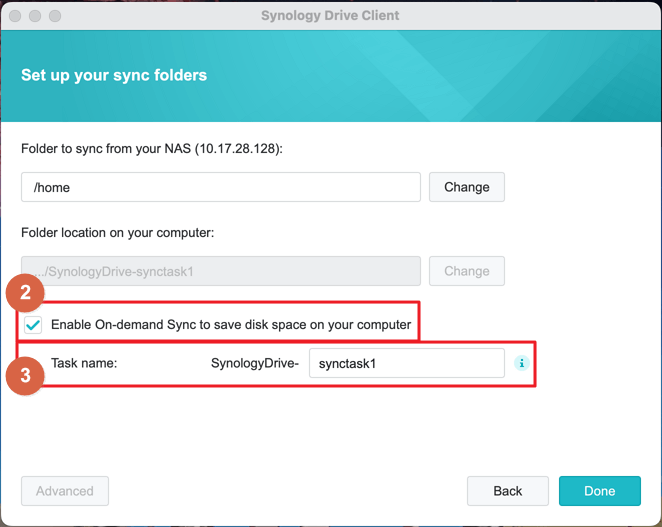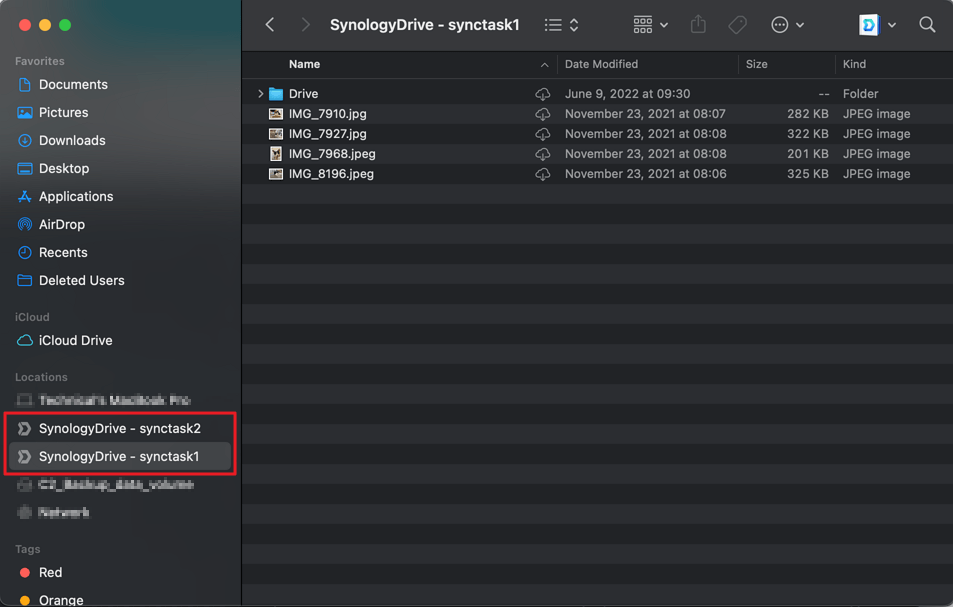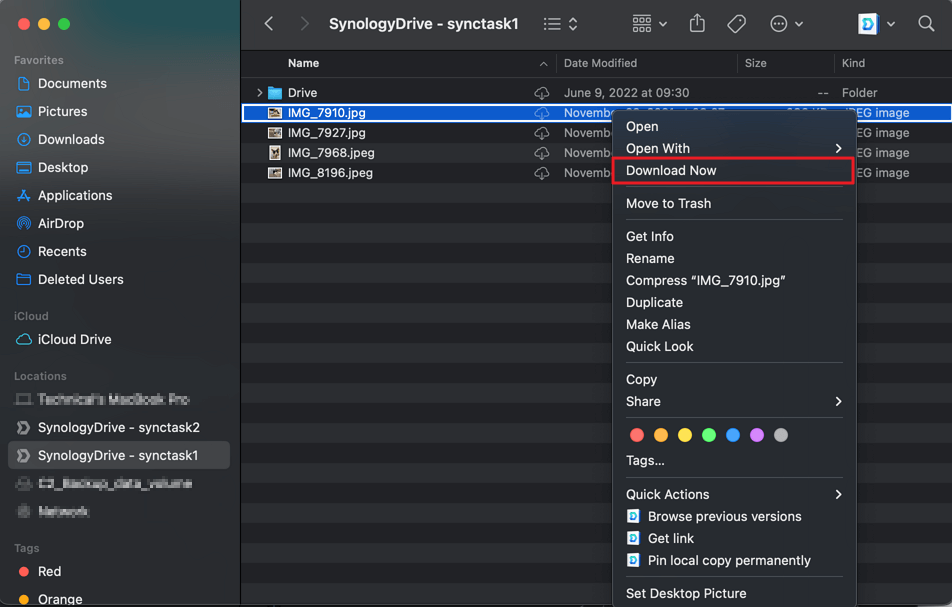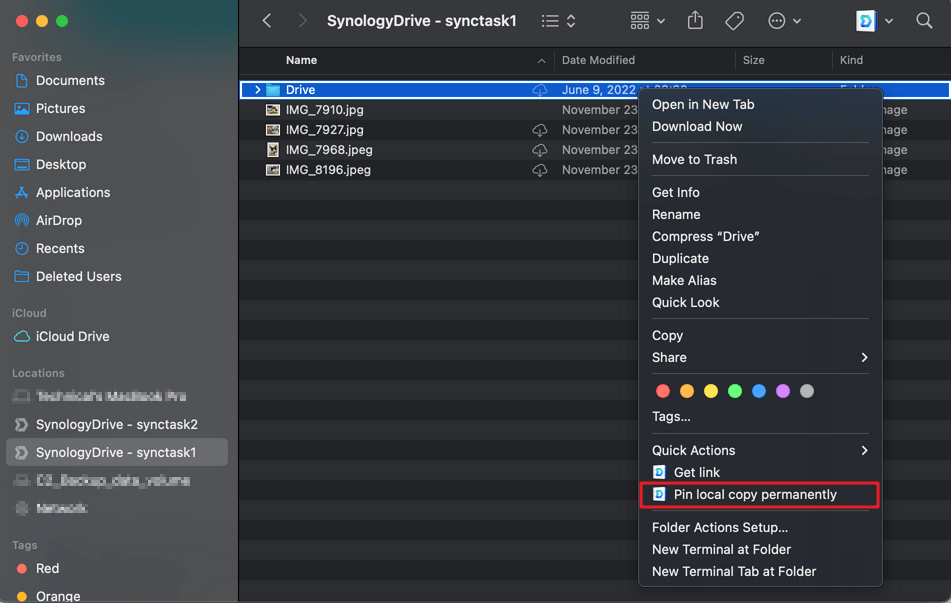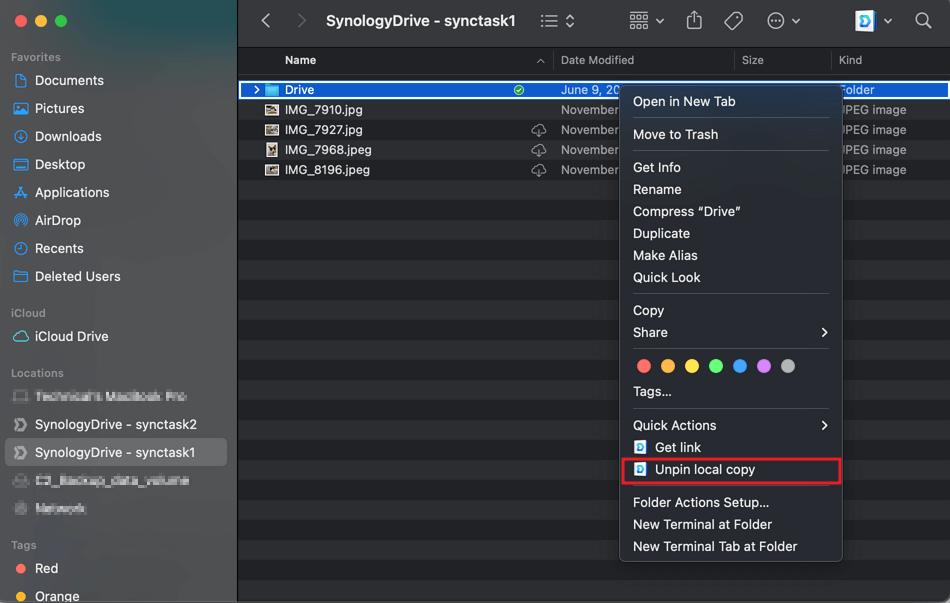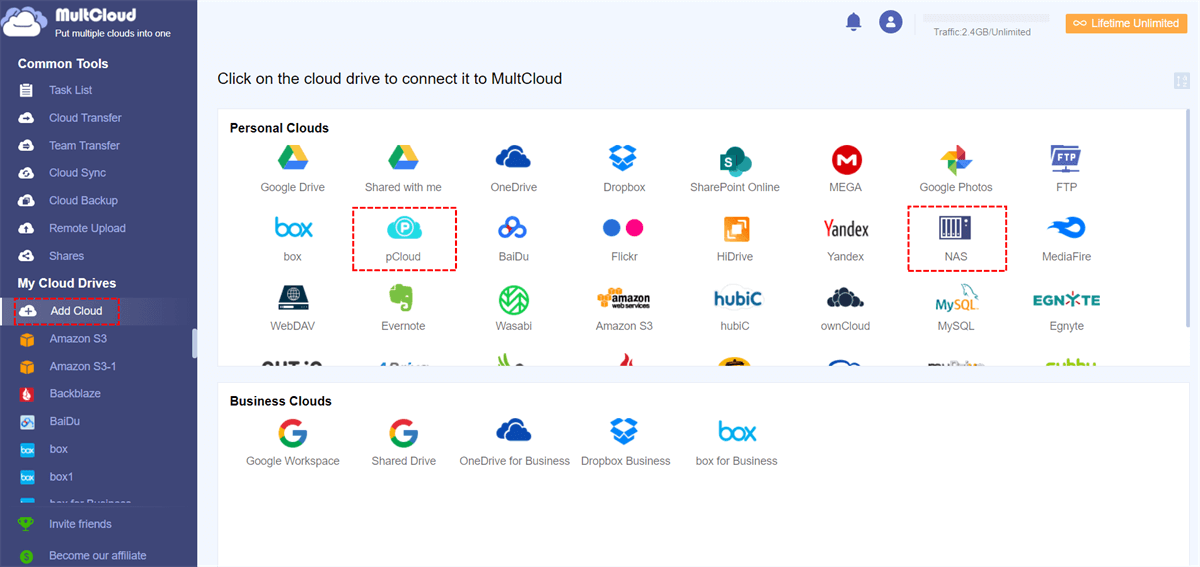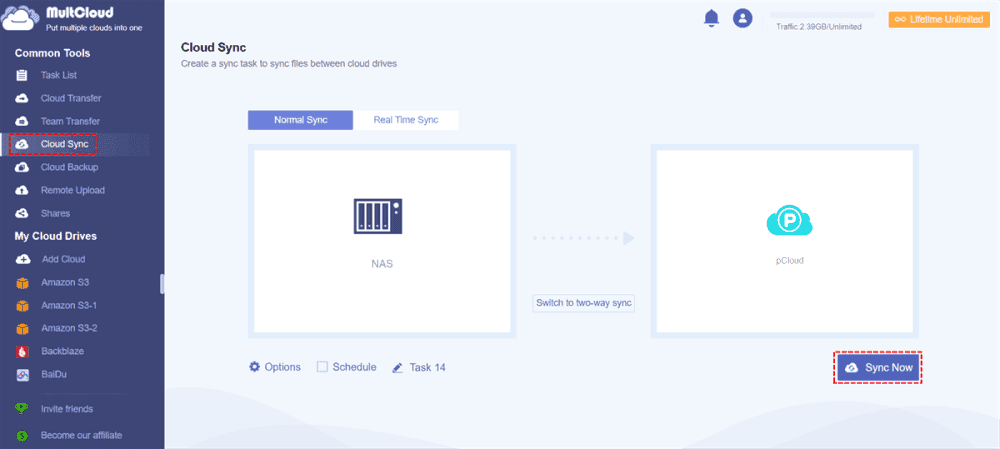Quick Search:
Know About Synology On-demand Sync
The On-demand Sync feature offers a convenient way to set up sync tasks between your computer and Synology NAS using Synology Drive. With this option activated, files are fetched to your local computer only when you access, edit, or save a local copy.
Below, you'll find tables outlining the various icons denoting the sync status of files with On-demand Sync enabled. These icons differ depending on whether you're using a Windows or macOS computer.
- The first icon means your file or folder is online but doesn't take up space. You can download a copy to your computer or pin it permanently.
- The second icon shows your file is already on your computer. To save space, you can delete it using Synology Drive.
- The third icon means the file is permanently saved on your computer for offline viewing.
- The cloud icon means your file or folder is online but doesn't take up space. You can click "Download Now" to save it locally or choose "Pin local copy permanently."
- The exclamation icon shows syncing or server connection issues.
- A progress bar or pie chart indicates download progress briefly.
- The green check means the file is permanently stored locally for offline use, even when low on disk space.
You may want to know how to connect to Synology NAS remotely.
How to Enable Synology On-demand Sync
Synology Drive Client on Mac - Synology Drive Selective Sync Settings
Hi, one of the key features of Dropbox we rely on is selecting and un-selecting folders for selective sync (not "Smart Sync", to be clear), so that they exist in the cloud and don't take up any hard drive space locally.
Drive Client appears to have the same feature but it doesn't seem to "remove" the unselected folders when I change the settings. The folders and contents are all still there (with the red dot) and taking up space, but I guess just not being updated to the NAS? Is there a way to remove the folders locally that I don't need, a la Dropbox? Thanks.
- Question from Reddit
Maybe like the user above, you still can't use Synology On-demand Sync correctly after understanding the meanings of various icons. At this point, follow the steps below and you may fully understand how to synchronize your data better.
Note: Before officially starting, you need to ensure that your system environment meets the following conditions:
| For Windows | 🔸Windows 10 versions 1809 and above 🔸Synology Drive Client 2.0.0 and above 🔸Synology Drive Server package 2.0.0 and above |
| For macOS | 🔸macOS 12.3 and above 🔸Synology Drive Client 3.2 and above 🔸Synology Drive Server package 2.0.0 and above |
>> Please look up here to solve it if you can’t connect to Synology NAS.
The operation method varies depending on your device. Let's start!
1. Enable Synology On-demand Sync on Windows
In Synology Drive Client 2.0 and later versions, the On-demand Sync feature comes pre-enabled when setting up a sync task. Alternatively, you can activate this option manually by following these steps:
Step 1. Choose the sync task you want to modify, then navigate to "Sync rules" > "Sync mode". Then tick the box labeled "Enable On-demand Sync to save disk space".
Step 2. Once On-demand Sync is activated, you'll notice a cloud icon next to the task, indicating its activation.
Step 3. Click on the local folder path to access your sync folder using Windows File Explorer. Each sync server creates a distinct system folder entry.
Step 4. To manage storage efficiently, right-click on any file and select "Synology Drive" > "Pin local copy permanently" / "Free up space".
Step 5. By selecting "Pin local copy permanently", the file's status changes, ensuring it remains accessible even when offline.
Note: If you want to disable On-demand Sync for an existing folder on Windows, you can select the folder and deselect "Enable On-demand Sync to save disk space" in the "Sync Mode" page, or right-click this folder from Synology Drive and then select "Stop syncing this folder".
2. Enable Synology On-demand Sync on Mac
The new feature of On-demand Sync for macOS has been introduced with the release of Synology Drive Client 3.2. Here's a step-by-step guide to activate and utilize this feature:
Step 1. Open Synology Drive Client and navigate to the "Sync Tasks" tab. Click on the "Create" button to initiate a new sync task and fill in the necessary details. Proceed by clicking "Next".
Step 2. On the "Set up your sync folders" page within the setup wizard, opt to enable On-demand Sync to optimize disk space usage on your computer.
Step 3. Upon selecting On-demand Sync, assign a name to the task and click "Done".
Step 4. Access your local sync folder in Finder by clicking on the local folder path. If multiple sync tasks have been created, you'll find corresponding sync folders listed on the left panel of Finder. Easily identify the task by the name you assigned during setup.
Step 5. For files or folders marked with a cloud icon, right-click and choose "Download Now" to make them accessible offline. Once downloaded, the cloud icon will disappear. Alternatively, for items without any icons, right-click and select "Remove Download" to reclaim storage space.
Step 6. Additionally, right-click on any item and select "Pin local copy permanently" to ensure it remains available offline. The icon will change to a green checkmark, indicating its offline availability.
Step 7. To remove a locally stored copy, simply right-click on the item and choose "Unpin local copy".
By following these steps, you can effectively manage your synced files and optimize storage usage on your macOS device.
Bonus Tip: Best Way to Sync Synology and Cloud Drives Remotely
As a professional data storage device, Synology not only supports users to sync local data to NAS, but also supports users to sync data in Synology and various cloud storage devices (such as Google Drive, Dropbox, OneDrive, Amazon S3, and Wasabi, etc.). When syncing with cloud account data, you need to make local settings in Synology. If you need to complete Synology cloud sync on any device, you can try this web-based cloud file manager---MultCloud.
- ✅Simple: The operation steps are simple and suitable for novices.
- ✅Convenient: The sync process can be performed on any device.
- ✅Fast: Professional servers provide faster synchronization services.
- ✅Diversity: You can establish sync relationships with 30+ cloud storage services.
Let's take pCloud, which is not supported by Synology, as an example. Here's how to do it.
Step 1: Sign up for a MultCloud account on the official website. Or you can sign up using Google, Facebook or Apple ID.
Step 2: Go to the left side of the home page, press the "Add Cloud" button, and then click the NAS icon to add your Synology NAS account. Then, follow the instructions on the pop-up window to grant MultCloud access to the account. Then add pCloud in the same way.
Step 3: To start the task, select Synology NAS or where path as the source in the first box under "Cloud Sync", select pCloud or where path as the destination in the second box, and click the "Sync Now" button.
Notes:
- You can set the sync mode or file filtering in "Options". Specific sync time can be set in "Schedule".
- If your NAS server is QNAP, you can also use this method to complete QNAP NAS to NAS sync or backup QNAP to pCloud.
Conclusion
Synology On-demand Sync provides a universal solution for efficient data sync, providing users with the flexibility to seamlessly access files while minimizing storage overhead. By following the guidelines outlined in this guide, you can take advantage of on-demand sync to simplify data management and increase productivity in both personal and business environments. In addition, you can also use MultCloud to remotely sync your Synology and cloud data.
MultCloud Supports Clouds
-
Google Drive
-
Google Workspace
-
OneDrive
-
OneDrive for Business
-
SharePoint
-
Dropbox
-
Dropbox Business
-
MEGA
-
Google Photos
-
iCloud Photos
-
FTP
-
box
-
box for Business
-
pCloud
-
Baidu
-
Flickr
-
HiDrive
-
Yandex
-
NAS
-
WebDAV
-
MediaFire
-
iCloud Drive
-
WEB.DE
-
Evernote
-
Amazon S3
-
Wasabi
-
ownCloud
-
MySQL
-
Egnyte
-
Putio
-
ADrive
-
SugarSync
-
Backblaze
-
CloudMe
-
MyDrive
-
Cubby
